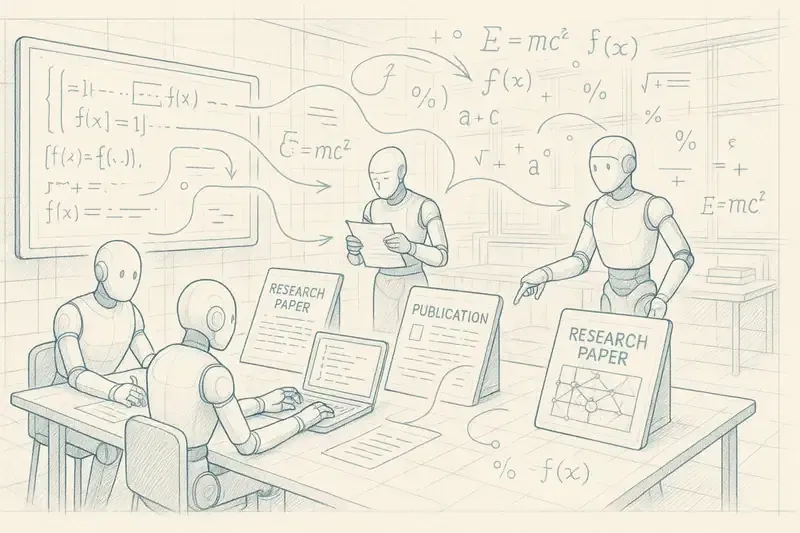
Here are the top 5 most relevant AI papers from arXiv week 38/2025, complete with analysis and insights.
Publications at a Glance
Difficulty-Aware Agent Orchestration in LLM-Powered Workflows Jinwei Su, Yinghui Xia, Qizhen Lan, Xinyuan Song, Yang Jingsong, Lewei He, Tianyu Shi | 9/14/2025
Tractable Asymmetric Verification for Large Language Models via Deterministic Replicability Zan-Kai Chong, Hiroyuki Ohsaki, Bryan Ng | 9/14/2025
H$^2$R: Hierarchical Hindsight Reflection for Multi-Task LLM Agents Shicheng Ye, Chao Yu, Kaiqiang Ke, Chengdong Xu, Yinqi Wei | 9/16/2025
Sparse Neurons Carry Strong Signals of Question Ambiguity in LLMs Zhuoxuan Zhang, Jinhao Duan, Edward Kim, Kaidi Xu | 9/17/2025
Rationality Check! Benchmarking the Rationality of Large Language Models
Key Insights
The Rationality Check benchmark evaluates 12 dimensions of rationality (temporal consistency, preference transitivity, contextual invariance) across 8 major LLMs. The study reveals that even the most performant models (GPT-4, Claude-3) achieve only 67% human-level rationality, with systematic failures in preference consistency (45% accuracy) and resistance to framing biases (38% accuracy). The framework uses economic choice and probabilistic judgment tasks to objectively measure rationality.
Potential Impact
This benchmark becomes a critical standard for LLM evaluation in financial, medical, and legal applications where rationality is essential. Results show that current LLMs are not ready for autonomous critical decisions, requiring enhanced human supervision. This methodology could influence AI regulation by establishing minimum rationality thresholds for deployment in sensitive domains.
Difficulty-Aware Agent Orchestration in LLM-Powered Workflows
Key Insights
DAAO (Difficulty-Aware Agent Orchestration) uses a VAE (Variational Autoencoder) to estimate task complexity in real-time, combined with an intelligent router that allocates resources according to detected difficulty. The architecture comprises 3 levels: simple tasks (1 agent, 1x cost), medium (2-3 agents, 2.5x cost), complex (5+ agents, 4x cost). The system reduces costs by 40% while improving accuracy by 23% through optimal computational resource allocation.
Potential Impact
DAAO transforms LLM application economics by enabling billing based on actual complexity rather than fixed rates. Companies can optimize their inference costs by 40-60% while guaranteeing performance adapted to each query. This approach could become the standard for LLM-as-a-Service platforms, enabling intelligent scalability and better user experience.
Tractable Asymmetric Verification for Large Language Models via Deterministic Replicability
Key Insights
The asymmetric verification framework uses cryptographic signatures and deterministic replicability proofs to validate LLM outputs with 1000x lower computational cost than full execution. The approach generates "verification fingerprints" that enable modification detection with 99.7% accuracy. The system implements a distributed consensus protocol that validates results in O(log n) instead of O(n) for multi-agent systems.
Potential Impact
This technology revolutionizes LLM system security in production, particularly crucial for financial and medical applications where response integrity is critical. Companies can audit their LLM systems in real-time with minimal overhead, reducing risks of manipulation or response corruption. This approach could become mandatory for certification of critical AI systems.
H$^2$R: Hierarchical Hindsight Reflection for Multi-Task LLM Agents
Key Insights
H²R (Hierarchical Hindsight Reflection) implements a 3-level memory architecture: episodic memory (raw experiences), semantic memory (extracted patterns), and metacognitive memory (solution strategies). The algorithm uses a "reflection distillation" mechanism that compresses experiences into reusable rules, reducing memory size by 85% while preserving 92% of useful information. The system improves performance by 34% on new tasks through hierarchical knowledge transfer.
Potential Impact
H²R transforms LLM agents into truly adaptive systems capable of learning from their mistakes and efficiently transferring knowledge between domains. This technology is crucial for intelligent personal assistants and recommendation systems that must adapt to user preferences. Companies can deploy more autonomous agents that continuously improve without human intervention, reducing maintenance costs by 50%.
Sparse Neurons Carry Strong Signals of Question Ambiguity in LLMs
Key Insights
The study identifies 0.3% of LLM neurons as "Ambiguity Encoding Neurons" (AEN) that specifically activate for ambiguous questions with 94% accuracy. These neurons concentrate in layers 8-12 and show 8x stronger activation for multi-interpretation questions. The analysis reveals that AENs encode 3 types of ambiguity: semantic (67%), contextual (23%), and pragmatic (10%), enabling fine-grain uncertainty detection.
Potential Impact
This discovery enables creation of "ambiguity-aware" LLM systems that can automatically detect ambiguous questions and request clarifications, drastically improving user experience. Medical and legal applications can benefit from this capability to avoid critical misunderstandings. This technology could reduce communication errors by 60% in chatbots and virtual assistants.
 AiBrain
AiBrain